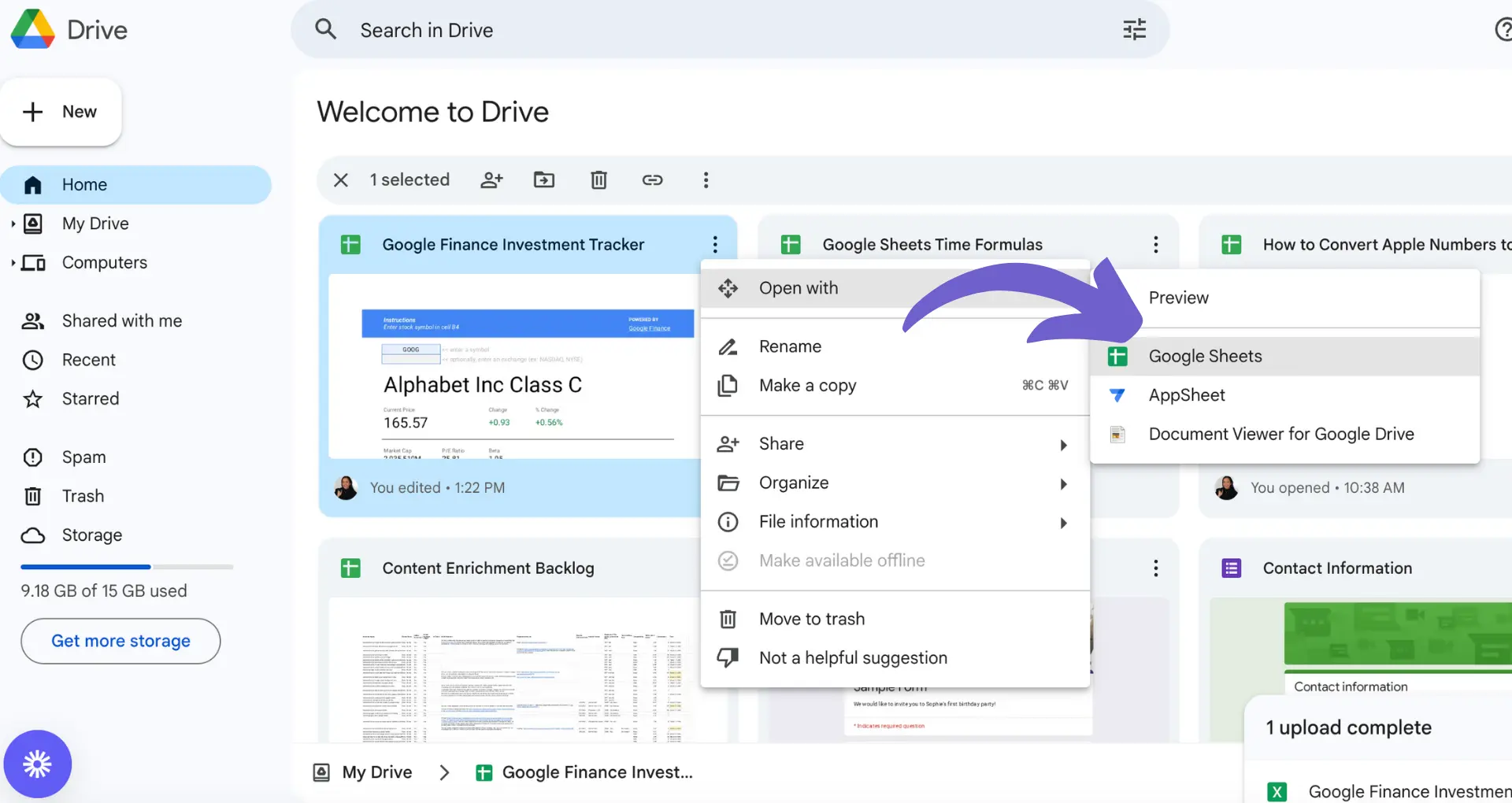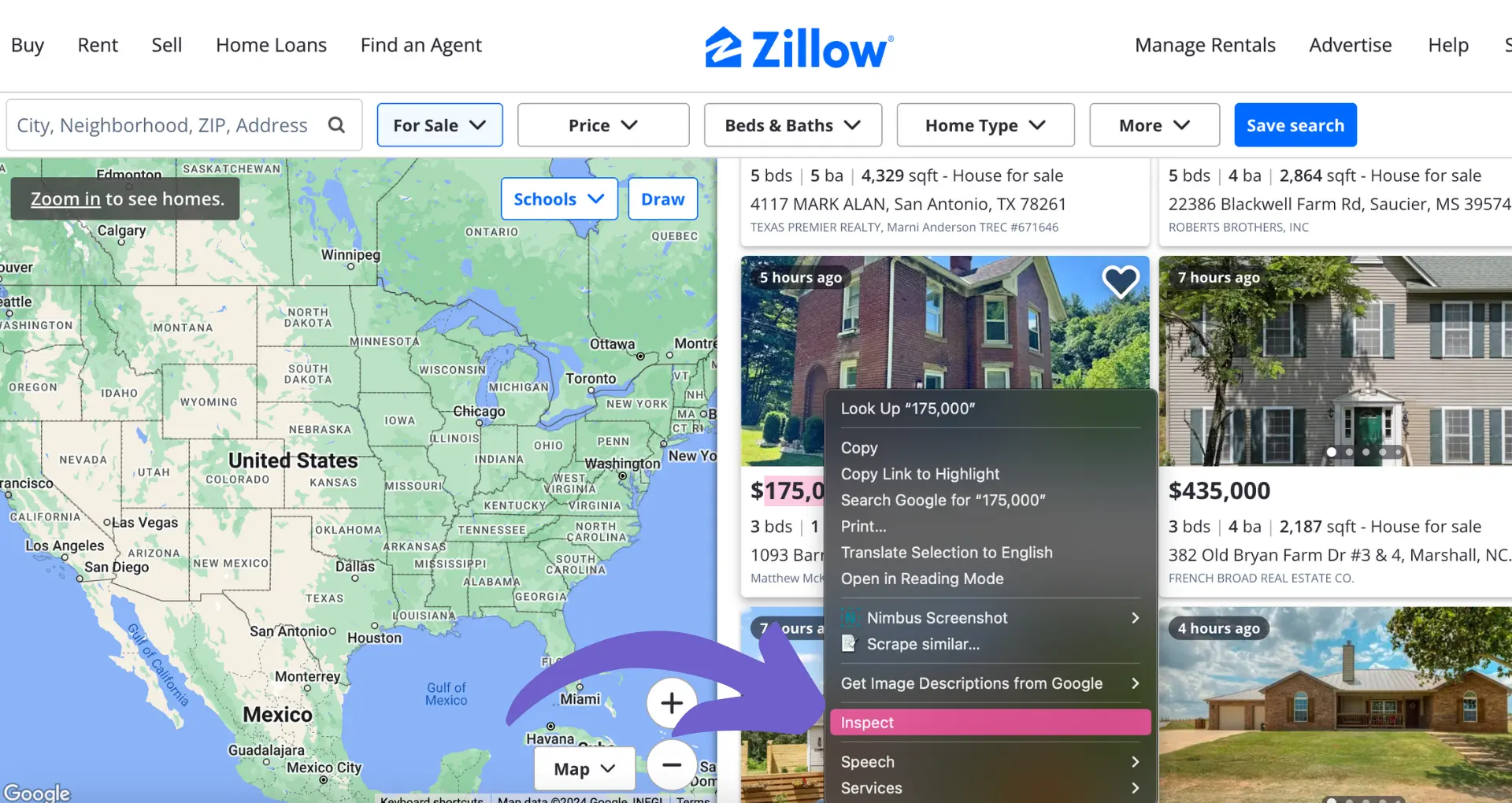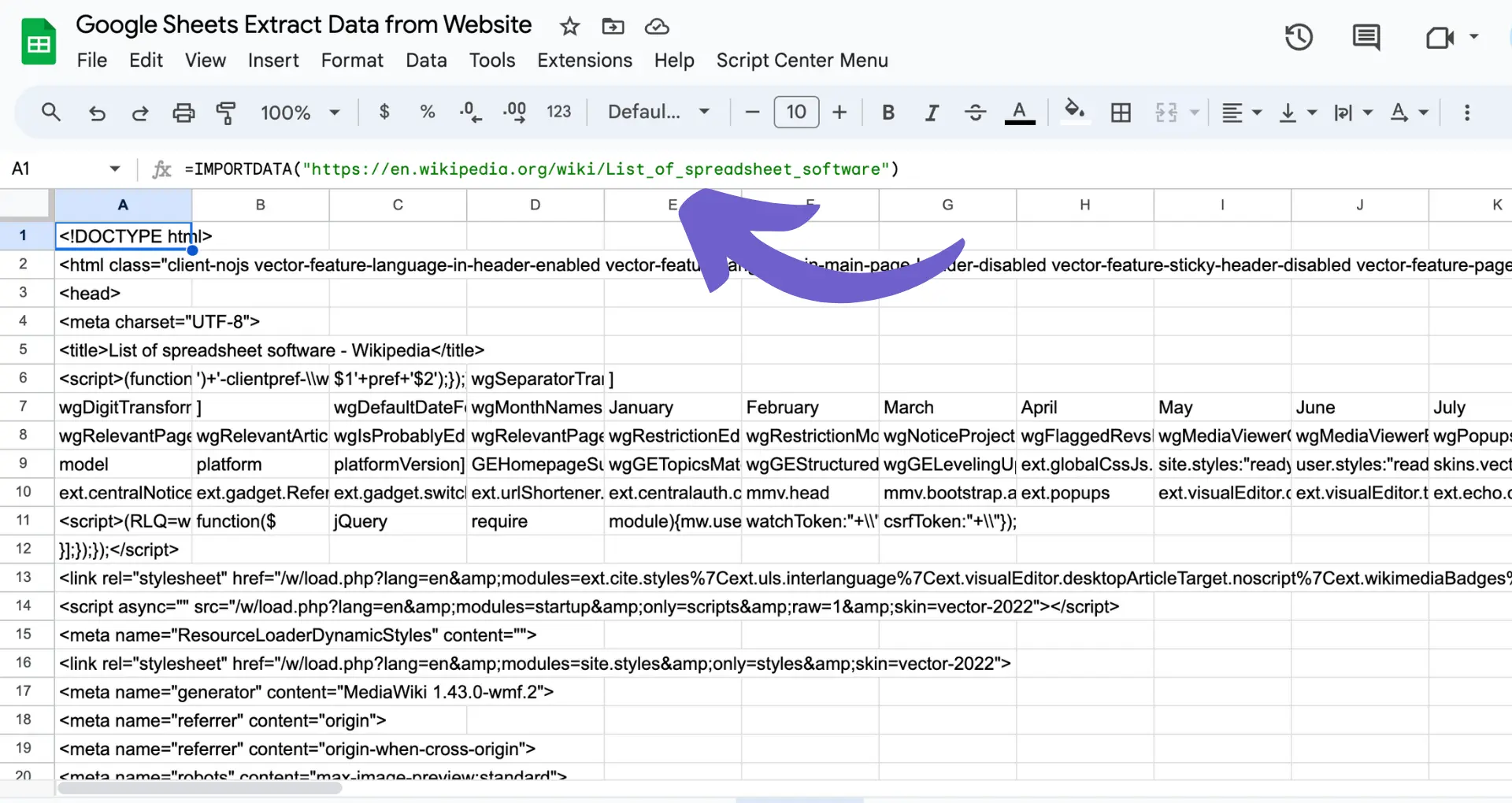





Upload CSV files to Google Sheets in three easy steps.
By the way, we're Bardeen, we build a free AI Agent for doing repetitive tasks.
If you work with spreadsheets, you might love Bardeen's GPT in Spreadsheets feature. It helps you analyze, summarize, and format data with ease.
Converting CSV files to Google Sheets is a simple process that allows you to easily manage and analyze your data. In this step-by-step guide, we'll walk you through the process of importing CSV files into Google Sheets, from basic manual uploads to advanced automated techniques using Google Apps Script. By the end of this guide, you'll be able to efficiently convert and manage your CSV data in Google Sheets.
CSV (Comma-Separated Values) is a widely used file format for storing and sharing tabular data. Its simplicity and universal compatibility make it a go-to choice for data exchange between various applications, including Google Sheets. Google Sheets, a powerful web-based spreadsheet tool, integrates with CSV files, allowing you to import, analyze, and collaborate on your data effortlessly.
In this comprehensive guide, we'll walk you through the process of converting CSV files to Google Sheets step-by-step. We'll cover:
Whether you're a beginner looking to import your first CSV file or an advanced user seeking to automate the process, this guide has you covered. By the end, you'll be equipped with the knowledge and skills to efficiently convert and manage your CSV data in Google Sheets, bringing AI into your spreadsheet.
CSV (Comma-Separated Values) is a widely used file format for storing and exchanging tabular data. Its simple structure consists of plain text where each line represents a row, and commas separate individual values within each row. This straightforward format makes CSV files highly compatible with various applications, including Google Sheets.
Google Sheets, a powerful web-based spreadsheet application, seamlessly integrates with CSV files. You can easily import CSV data into Google Sheets, leveraging its robust features for data analysis, collaboration, and visualization. Some key benefits of using Google Sheets with CSV files include:
When working with CSV files in Google Sheets, it's essential to ensure data consistency and proper formatting. Google Sheets automatically detects and parses CSV data, but you may need to make minor adjustments, such as specifying the correct delimiter or handling special characters.
By combining the simplicity of CSV files with the power of Google Sheets, you can efficiently manage, analyze, and share your data. Whether you're working with small datasets or large-scale projects, the compatibility between CSV and Google Sheets enables you to streamline your workflow and make data-driven decisions with ease.
Save time on data entry by using Bardeen to enrich LinkedIn profile data in Google Sheets. Let Bardeen automate your repetitive tasks.
Manually uploading a CSV file to Google Sheets is a straightforward process. Here's a step-by-step guide:

After uploading the CSV file, you have several options to work with the data:
When importing CSV data, Google Sheets will automatically detect the delimiter (comma, semicolon, or tab) used in the file. However, you can manually specify the delimiter if needed to ensure proper data separation.
By following these simple steps, you can easily upload and work with CSV files in Google Sheets, connect Excel for advanced features, leveraging its powerful features for data analysis, collaboration, and sharing.
Google Apps Script provides a powerful way to automate the process of converting and updating CSV files in Google Sheets. By leveraging Apps Script, you can create custom functions and triggers to streamline data import and synchronization.

Here's a basic example of how to use Apps Script to import CSV data into Google Sheets:
function importCSV() { var csvFile = DriveApp.getFileById('FILE_ID'); var csvData = Utilities.parseCsv(csvFile.getBlob().getDataAsString()); var sheet = SpreadsheetApp.getActiveSheet(); sheet.getRange(1, 1, csvData.length, csvData[0].length).setValues(csvData);}
This script retrieves a CSV file from Google Drive using its file ID, parses the CSV data into a 2D array using the Utilities.parseCsv() method, and then writes the data to the active sheet starting from cell A1.
Bardeen lets you easily connect Google Docs and Google Sheets for seamless data flow without manual tasks. Save time by automating these processes effortlessly.
To automate the import process, you can set up triggers that run the script at regular intervals. Here's how to create a time-driven trigger:

With the trigger in place, the script will automatically run at the specified intervals, importing new data from the CSV file into the Google Sheets spreadsheet.
Apps Script also allows you to customize the import process further, such as handling headers, data validation, error handling, and more. You can create more advanced scripts to suit your specific requirements and automate complex data workflows.
When importing CSV files into Google Sheets, you may encounter various issues that can hinder the process or lead to data inconsistencies. Here are some common problems and their solutions:
To troubleshoot and ensure data integrity during the CSV import process, follow these steps:
By addressing these common issues and following the troubleshooting steps, you can ensure a smooth and accurate conversion of your CSV files to Google Sheets. For more advanced workflows, you might want to scrape data from websites and automate data extraction.
For more complex data structures or large CSV files, you can use custom Google Apps Scripts or functions to automate the import process into Google Sheets. Here are some advanced techniques:
Utilities.parseCsv() method to parse CSV data into a 2D array that can be easily inserted into a sheet using Sheet.getRange().setValues().SpreadsheetApp.flush() method to write data to the sheet periodically and avoid exceeding execution time limits.ScriptApp.newTrigger() to run your import script on a regular schedule, such as daily or weekly, ensuring your Google Sheet always has the latest data.try...catch blocks to gracefully handle issues like invalid CSV data or missing files, logging errors for troubleshooting.Automate CSV imports easily by using Bardeen's enrichment and qualification playbooks. Save time and focus on important tasks.
Integrating external APIs can further enhance the automation of data import and synchronization. For example:
UrlFetchApp service to make HTTP requests to an API endpoint and retrieve CSV data directly from an external source.By leveraging the power of Apps Script and custom functions, you can build robust and efficient solutions for importing and synchronizing data with Google Sheets, tailored to your specific requirements.
When working with CSV data in Google Sheets, it's essential to follow best practices to ensure data integrity and accuracy. Here are some tips:
Regularly review and update your CSV data to prevent data decay and ensure accuracy. Some best practices include:
By following these best practices and regularly maintaining your CSV data in Google Sheets, you can ensure your data remains accurate, consistent, and reliable for analysis and decision-making.










SOC 2 Type II, GDPR and CASA Tier 2 and 3 certified — so you can automate with confidence at any scale.
Bardeen is an automation and workflow platform designed to help GTM teams eliminate manual tasks and streamline processes. It connects and integrates with your favorite tools, enabling you to automate repetitive workflows, manage data across systems, and enhance collaboration.
Bardeen acts as a bridge to enhance and automate workflows. It can reduce your reliance on tools focused on data entry and CRM updating, lead generation and outreach, reporting and analytics, and communication and follow-ups.
Bardeen is ideal for GTM teams across various roles including Sales (SDRs, AEs), Customer Success (CSMs), Revenue Operations, Sales Engineering, and Sales Leadership.
Bardeen integrates broadly with CRMs, communication platforms, lead generation tools, project and task management tools, and customer success tools. These integrations connect workflows and ensure data flows smoothly across systems.
Bardeen supports a wide variety of use cases across different teams, such as:
Sales: Automating lead discovery, enrichment and outreach sequences. Tracking account activity and nurturing target accounts.
Customer Success: Preparing for customer meetings, analyzing engagement metrics, and managing renewals.
Revenue Operations: Monitoring lead status, ensuring data accuracy, and generating detailed activity summaries.
Sales Leadership: Creating competitive analysis reports, monitoring pipeline health, and generating daily/weekly team performance summaries.